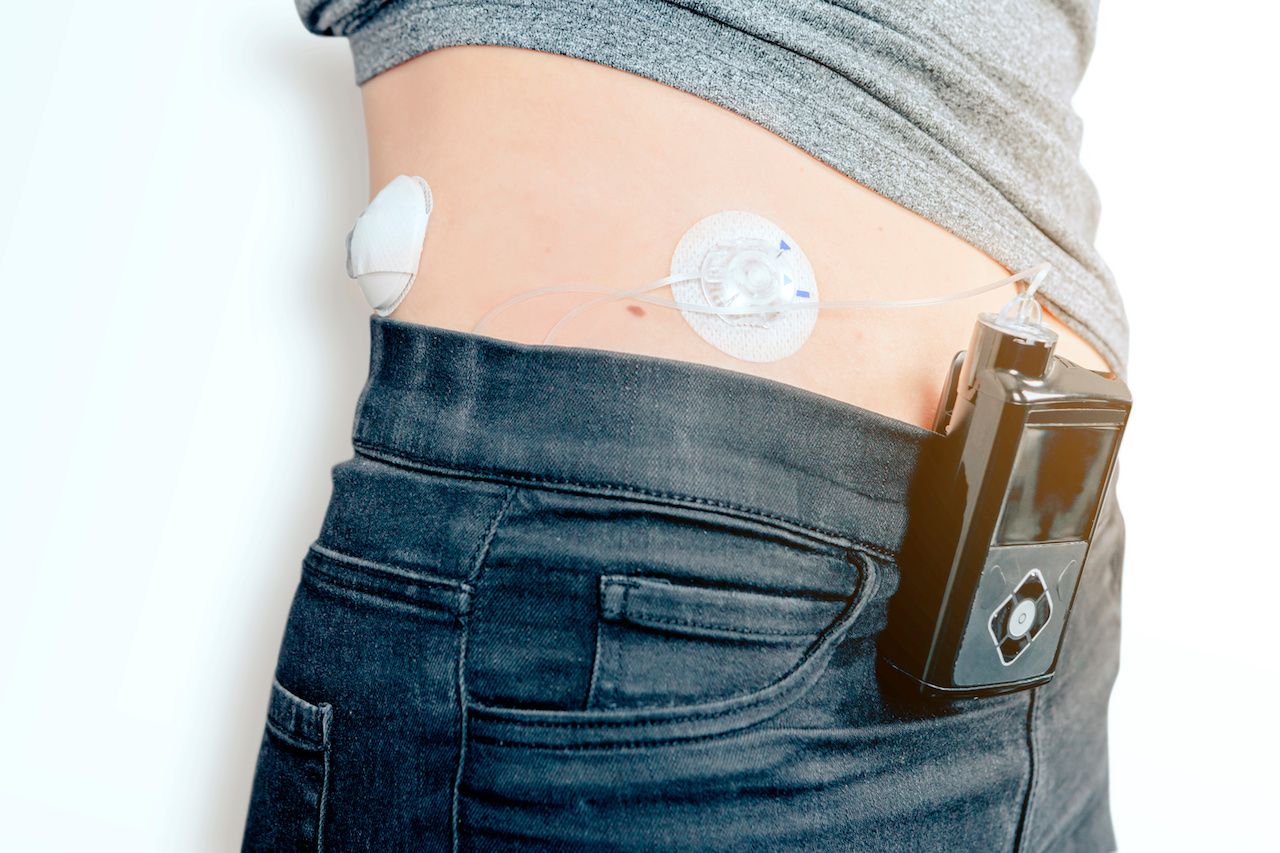- Center on Health Equity & Access
- Clinical
- Health Care Cost
- Health Care Delivery
- Insurance
- Policy
- Technology
- Value-Based Care
Hospitalized Children With Diabetes May Be Able to Continue Safe Use of Home Pumps, Suggest Findings
Using home insulin pumps when hospitalized was relatively safe compared with hospital-managed pumps and insulin injections among more than 2700 children admitted to a single hospital center.
Findings from an observational study suggest that young patients hospitalized with type 1 diabetes can continue to safely use home insulin pumps.
Children with diabetes admitted to non-intensive care units can continue using their home insulin pumps with the safety and efficacy as hospital-managed pumps.
Image credit: Carlo - stock.adobe.com

Published in JAMA Network Open, the study found that using home insulin pumps when hospitalized was relatively safe compared with hospital-managed pumps and insulin injections among more than 2700 children admitted to a single hospital center. These findings, wrote the researchers of the study, suggest that home insulin pump use may be considered for most insulin-dependent patients admitted to non-intensive care units.
“Each hospital and health system must make its own determinations about the risks and benefits of permitting home insulin pump use,” wrote the researchers. “Understandably, hospitals may hesitate to rely on patients and caregivers to deliver insulin, which is known to be a high-risk drug. Lack of control over the type of home device being used and lack of staff familiarity with the many types of home insulin pumps may also give policymakers pause. However, these factors must be balanced with patients’ or caregivers’ desires to continue using home equipment and hopes to avoid unnecessary sticks for insulin injections.”
None of the patients using a home or hospital pump throughout the 6-year period (January 2016–December 2021) developed diabetes ketoacidosis. There were 2 patients receiving insulin injections who developed the complication.
Across patients, there were just over 18,000 insulin days, 990 involved hospital insulin pumps and 775 involved home pumps. Patients ranged between 6 months and 25 years, with a median age of 15.8 years. Patients receiving a home pump and those receiving a hospital pump had were hyperglycemic on 27% and 15.7% of insulin days, respectively. Meanwhile, patients receiving insulin injections were hyperglycemic on 45.2% of insulin days.
Similarly, the proportion of moderate hypoglycemia days was significantly lower among patients using either pump type. Insulin days with moderate hypoglycemia occurred during 4.5% of insulin days among patients using a caregiver-managed insulin pump and 3.1% of insulin days among patients using a hospital-managed insulin pump; patients receiving insulin injections had moderate hypoglycemia on 5.1% of insulin days. The amount of days with severe hypoglycemia didn’t differ significantly across the 3 methods for insulin delivery.
Findings also showed that blood glucose control was achieved quicker among patients receiving one of the 2 pumps than among those receiving insulin injections.
The researchers noted that home insulin pump use is standard in their institution, though the group highlighted the broad and ambiguous level of support needed to facilitate safe use of the insulin delivery method for hospitalized patients, with varying needs across different hospitals.
“Apart from providing and documenting appropriate insulin doses and ensuring home pumps are safe in the inpatient setting, other factors and strategies for caring for hospitalized children using home insulin pumps should be considered,” described the researchers. “All pumps, regardless of model, require inspection of the pump site for any signs of infection and replacement of the pump catheter at the appropriate interval. Nurses and other medical professionals may be required to monitor pump catheter sites. Other team members, such as pharmacists and diabetes educators, may provide individual aspects of care.”
The group added that some hospitals may require certain staff to get additional training in pump use.
Reference
Owens J, Courter J, Schuler C, Lawrence M, Hornung L, Lawson S. Home insulin pump use in hospitalized children with type 1 diabetes. JAMA Netw Open. 2024;7(2):e2354595
